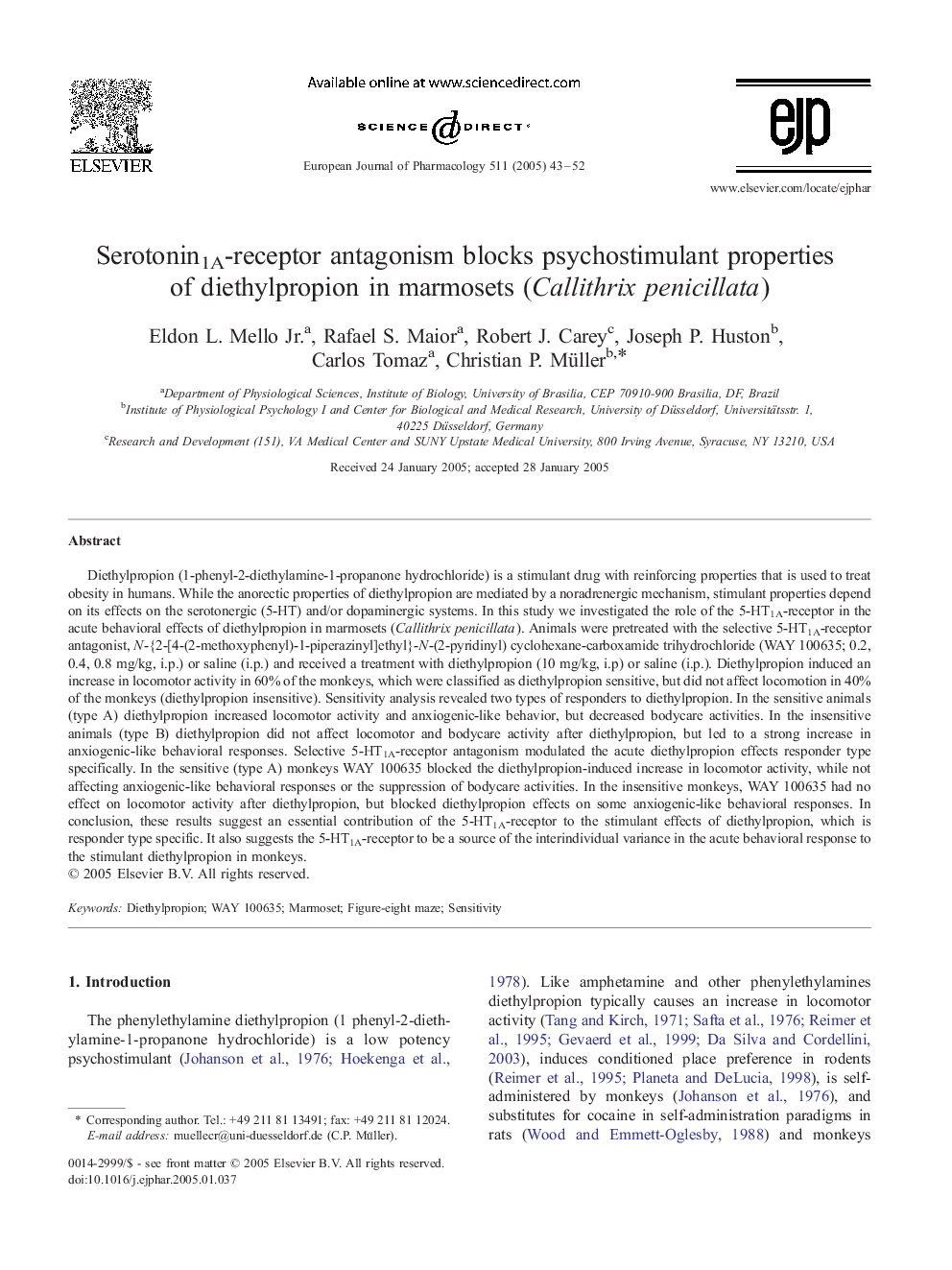| Article ID | Journal | Published Year | Pages | File Type |
|---|---|---|---|---|
| 9921445 | European Journal of Pharmacology | 2005 | 10 Pages |
Abstract
Diethylpropion (1-phenyl-2-diethylamine-1-propanone hydrochloride) is a stimulant drug with reinforcing properties that is used to treat obesity in humans. While the anorectic properties of diethylpropion are mediated by a noradrenergic mechanism, stimulant properties depend on its effects on the serotonergic (5-HT) and/or dopaminergic systems. In this study we investigated the role of the 5-HT1A-receptor in the acute behavioral effects of diethylpropion in marmosets (Callithrix penicillata). Animals were pretreated with the selective 5-HT1A-receptor antagonist, N-{2-[4-(2-methoxyphenyl)-1-piperazinyl]ethyl}-N-(2-pyridinyl) cyclohexane-carboxamide trihydrochloride (WAY 100635; 0.2, 0.4, 0.8 mg/kg, i.p.) or saline (i.p.) and received a treatment with diethylpropion (10 mg/kg, i.p) or saline (i.p.). Diethylpropion induced an increase in locomotor activity in 60% of the monkeys, which were classified as diethylpropion sensitive, but did not affect locomotion in 40% of the monkeys (diethylpropion insensitive). Sensitivity analysis revealed two types of responders to diethylpropion. In the sensitive animals (type A) diethylpropion increased locomotor activity and anxiogenic-like behavior, but decreased bodycare activities. In the insensitive animals (type B) diethylpropion did not affect locomotor and bodycare activity after diethylpropion, but led to a strong increase in anxiogenic-like behavioral responses. Selective 5-HT1A-receptor antagonism modulated the acute diethylpropion effects responder type specifically. In the sensitive (type A) monkeys WAY 100635 blocked the diethylpropion-induced increase in locomotor activity, while not affecting anxiogenic-like behavioral responses or the suppression of bodycare activities. In the insensitive monkeys, WAY 100635 had no effect on locomotor activity after diethylpropion, but blocked diethylpropion effects on some anxiogenic-like behavioral responses. In conclusion, these results suggest an essential contribution of the 5-HT1A-receptor to the stimulant effects of diethylpropion, which is responder type specific. It also suggests the 5-HT1A-receptor to be a source of the interindividual variance in the acute behavioral response to the stimulant diethylpropion in monkeys.
Related Topics
Life Sciences
Neuroscience
Cellular and Molecular Neuroscience
Authors
Eldon L. Jr., Rafael S. Maior, Robert J. Carey, Joseph P. Huston, Carlos Tomaz, Christian P. Müller,
